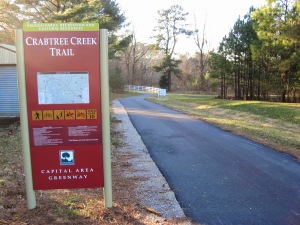
Just ten miles from my Asheville homestead is an easy connection to the Mountain-to-Sea Trail, a growing statewide amenity that is “a simple footpath stretching almost 1,200 miles across North Carolina from Clingmans Dome in the Great Smoky Mountains to Jockey’s Ridge on the Outer Banks.” My section climbs Bull Gap from Ox Creek Road to the ruins of Rattlesnake Lodge, just off the Blue Ridge Parkway. In early May, the trail is a stunning showcase of mountain spring flowers.

Trillium fruits become a food for deer. Wildflowers of the Carolinas by Nora and Rick Bowers states that ants take their seeds home and then eat only the oily coating, thus germinating some of the seeds. Wildflowers of the Blue Ridge Parkway by J.A. Alderman says they are “one of the stars of mountain wildflowers,” sometimes covering acres of forest floor.

Trilium blooms start white and turn pink as they get pollinated. Mountain flowers blossom early before the leaf canopy closed in for the summer. By mid June, most of these blooms will be long gone.



Yes, I see the poison ivy! The trail criss-crosses as it climbs and you can see folks quite a bit below or above you. Parking on Ox Creek Rd. gets crowded on the weekends. I have yet to get my retired old legs all the way to the top to see the remains of Rattlesnake lodge, said to be an impressive stone foundation. But I’ll get there sometime – maybe this fall to see the other end of this cycle.



Fallen logs off the trail are left where they are and there are huge stone outcrops along the way.







This is a parasitic plant that lives off of tree roots. It is less respectfully called squaw root, as Native American woman used it medicinally. It grows in dry woods near oaks, so there are several specimans on this trail.

The Appalachian mountains in North Carolina represent a highly diverse mix of Northern and Southern plant species. You can watch the species change as you gain elevation on this steep trail.

My own backyard offers quite a few wild spring flowers, but it can be hard to catch them in bloom! Wild iris, rattlesnake plantain (an orchid), jack-in-the-pulpit, star chickweed, and trout lily appear, but some of those just for a few days before taking on their summer form. I have purchased and transplant ginseng and ramps just for the fun of it. Happy trails in your spring flowers findings!
Read the book based on this blog



























